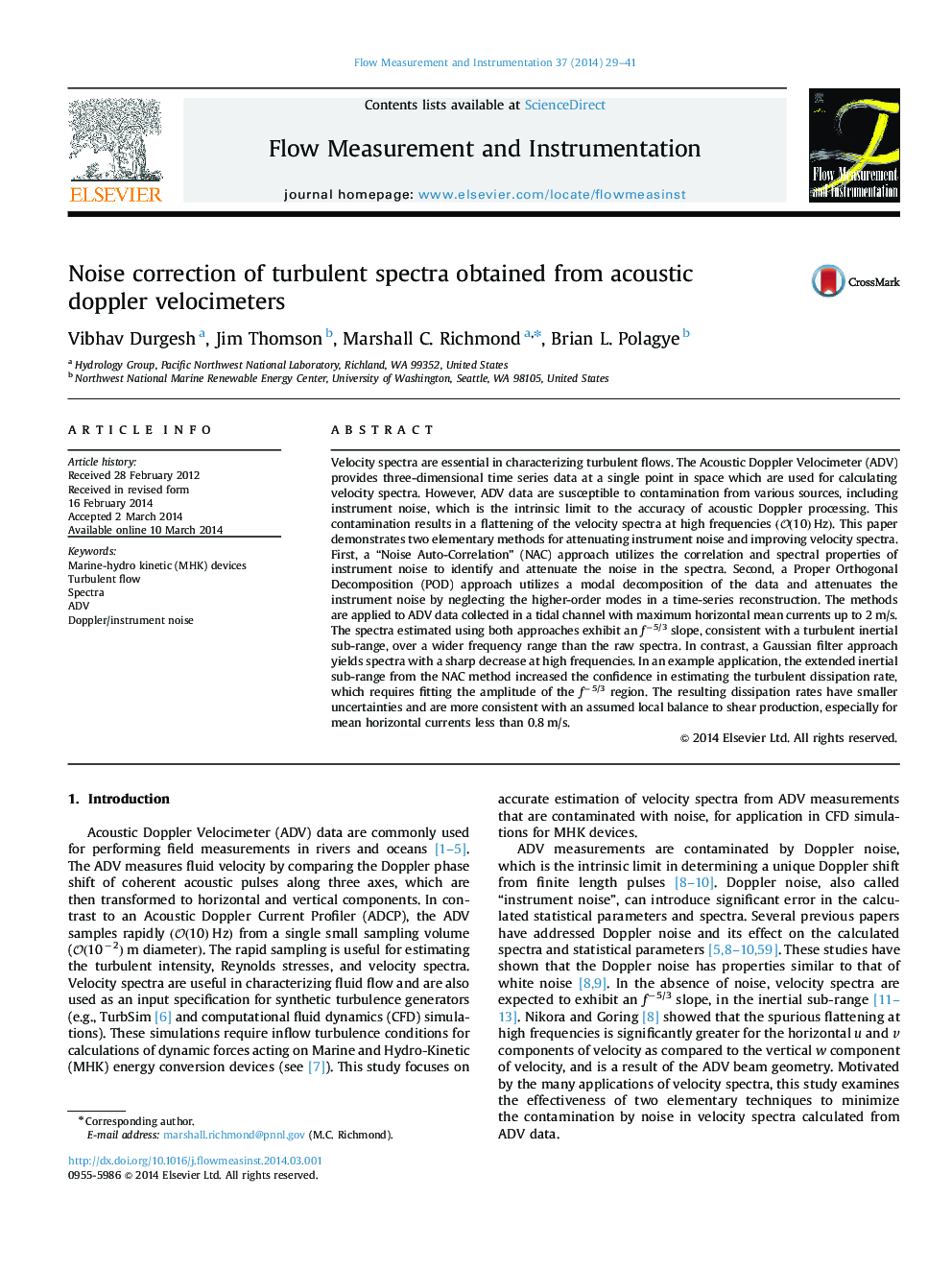| کد مقاله | کد نشریه | سال انتشار | مقاله انگلیسی | نسخه تمام متن |
|---|---|---|---|---|
| 708413 | 1461100 | 2014 | 13 صفحه PDF | دانلود رایگان |
• A new noise reduction method is introduced for processing acoustic Doppler velocimeter (ADC) data.
• The method is applied to a data set from a tidal energy site.
• Examples of improved turbulence spectra are illustrated.
Velocity spectra are essential in characterizing turbulent flows. The Acoustic Doppler Velocimeter (ADV) provides three-dimensional time series data at a single point in space which are used for calculating velocity spectra. However, ADV data are susceptible to contamination from various sources, including instrument noise, which is the intrinsic limit to the accuracy of acoustic Doppler processing. This contamination results in a flattening of the velocity spectra at high frequencies (O(10)Hz). This paper demonstrates two elementary methods for attenuating instrument noise and improving velocity spectra. First, a “Noise Auto-Correlation” (NAC) approach utilizes the correlation and spectral properties of instrument noise to identify and attenuate the noise in the spectra. Second, a Proper Orthogonal Decomposition (POD) approach utilizes a modal decomposition of the data and attenuates the instrument noise by neglecting the higher-order modes in a time-series reconstruction. The methods are applied to ADV data collected in a tidal channel with maximum horizontal mean currents up to 2 m/s. The spectra estimated using both approaches exhibit an f−5/3 slope, consistent with a turbulent inertial sub-range, over a wider frequency range than the raw spectra. In contrast, a Gaussian filter approach yields spectra with a sharp decrease at high frequencies. In an example application, the extended inertial sub-range from the NAC method increased the confidence in estimating the turbulent dissipation rate, which requires fitting the amplitude of the f−5/3 region. The resulting dissipation rates have smaller uncertainties and are more consistent with an assumed local balance to shear production, especially for mean horizontal currents less than 0.8 m/s.
Journal: Flow Measurement and Instrumentation - Volume 37, June 2014, Pages 29–41
